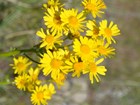Plant communities are essential components of all major ecosystems. Plants are the ultimate source of food for other organisms and the main source of organic material in soil and water. They also influence climate and provide the scenery that park visitors enjoy. The NPS Northern Great Plains Network monitors the number, identity, and relative abundance of plant species, as well as their horizontal cover and vertical structure, to determine the health of park ecosystems.
-
Agate Fossil Beds National Monument
Article 1: Plant Community Monitoring at Agate Fossil Beds National Monument
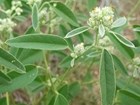
The lush valley and remote rocky outcrops at Agate Fossil Beds National Monument are home to over 363 plant species. Native plant diversity is moderate in the mixed-grass prairie at the park compared to other grasslands in the region. Monitoring can track changes to plant communities over time, as well as document species of management concern. Read more
-
Badlands National Park
Article 2: Plant Community Monitoring at Badlands National Park
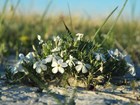
Plant community monitoring has been carried out at Badlands National Park since 2011. The park, in southwestern South Dakota, protects one of the largest expanses of mixed-grass prairie in the U.S. We monitor the native and nonnative plants on the park to assess the health of park ecosystems. Read more
-
Devils Tower National Monument
Article 3: Plant Community Monitoring at Devils Tower National Monument
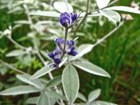
Devils Tower National Monument is on the edge of the Black Hills in northeastern Wyoming. The park contains ponderosa pine woodlands, mixed-grass prairie, and riparian plant communities. Monitoring plants in the park is important for tracking changes over time, and allows us to explore relationships between changes in community structure and climate change, grazing, fire, and other disturbances. Read more
-
Fort Laramie National Historic Site
Article 4: Plant Community Monitoring at Fort Laramie National Historic Site
Fort Laramie National Historic Site may be only 833 acres in size, but it has a relatively large diversity of plants. The park is a mosaic of disturbed old fields, native prairie, and riparian (riverside) forests along the Laramie and North Platte rivers. Exotic plant species are abundant. We monitor plants to document long-term trends in plant communities and evaluate the effectiveness of management programs. Read more
-
Fort Union Trading Post National Historic Site
Article 5: Plant Community Monitoring at Fort Union Trading Post National Historic Site
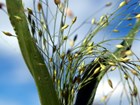
As the landscape surounding Fort Union Trading Post National Historic Site underwent a transformation from a frontier to an agricultural environment in recent history, it led to the reduction and extirpation of native plant species, followed by the introduction or invasion of exotics. Plant community monitoring has been conducted at the park since 2011, and is critical for understanding the current health of ecosystems and providing feedback on management activities. Read more
-
Jewel Cave National Monument
Article 6: Plant Community Monitoring at Jewel Cave National Monument
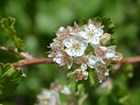
Jewel Cave National Monument might be best known for its outstanding subterranean system, but above the ground the park is just as special, encompassing 1,274 acres of ponderosa pine forest and open meadows. The park hosts a rich diversity of native plants. Plant community monitoring is critical for understanding the current health of habitats, and can alert park managers to degradation of an ecosystem. Read more
-
Knife River Indian Villages National Historic Site
Article 7: Plant Community Monitoring at Knife River Indian Villages National Historic Site
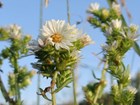
Knife River Indian Villages National Historic Site contains 1,758 acres of upland mixed-grass prairie and riparian forest habitats, much of which has a long history of human use. Plant community monitoring is critical for understanding the current health of ecosystems and can provide an early warning of undesirable changes. Read more
-
Mount Rushmore National Memorial
Article 8: Plant Community Monitoring at Mount Rushmore National Memorial
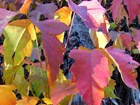
Mount Rushmore National Memorial is a relatively small park that contains the second-largest area of old growth ponderosa pine forest in the Black Hills. There is a lower diversity of plants under the closed-canopy of pines, but these stands of old growth forest are in pristine condition. We monitor plant communities to improve understanding of the effects that external drivers and management actions have on plants in these unique ponderosa pine forest ecosystems. Read more
-
Scotts Bluff National Monument
Article 9: Plant Community Monitoring at Scotts Bluff National Monument
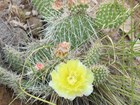
The 3,003 acres of Scotts Bluff National Monument are dominated by mixed-grass prairie with smaller areas of juniper woodlands, badlands, and riparian forests, overlooked by the iconic bluffs themselves. Plant community monitoring helps us understand the current health of ecosystems and monitor their change over time. We have detected 35 rare plant species and 40 exotic species on the park. Read more
-
Theodore Roosevelt National Park
Article 10: Plant Community Monitoring at Theodore Roosevelt National Park
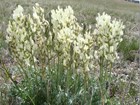
Theodore Roosevelt National Park is composed of three discrete units, each of which is a patchwork of mixed-grass prairie, clay buttes, bottomland forest, and open shrublands. The three park units are connected by the Little Missouri River. The park contains a great diversity of plants, but an increase in exotic plants could change this. We monitor plant communities here to better understand the current health of park ecosystems and to detect park-wide trends in vegetation. Read more
-
Wind Cave National Park
Article 11: Plant Community Monitoring at Wind Cave National Park
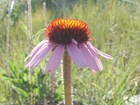
Wind Cave National Park is well known for the amazing and unusual geology of its complex cave system underground, but the park also protects 33,851 acres of ponderosa pine forest and mixed-grass prairie above ground. We started monitoring plant communities here in 2011 because healthy plant communities support healthy ecosystems. Plant monitoring data also help us to detect long-term trends in this very diverse park. Read more

